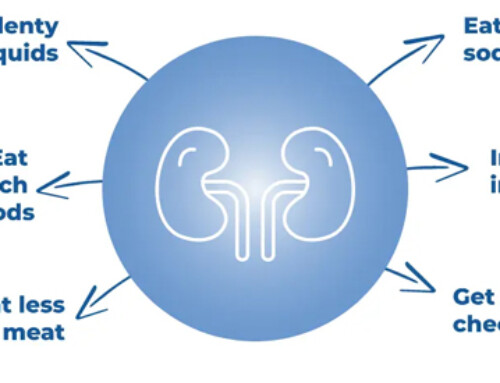Table of Contents
Intravenous fluids (IVF) are frequently prescribed and comprise multiple formulations that may be hypotonic, isotonic or hypertonic to plasma..
To understand appropriate administration of IV fluids, an understanding of fluid distribution in the body is necessary.
Overview of physiology of body fluid
Total Body Water (TBW)
- Total body water is typically estimated as:
- 50% of body weight for adult females
- 60% of body weight for adult males
- TBW can range from 45-75% of body weight
- Higher in infants and children and lower in the elderly
- Muscle contains a higher amount of water than fat
Distribution of Total Body Water
The total body water can be divided into different body compartments

Movement of water between compartments
- Extracellular fluid movement (between the interstitial and intravascular compartments).
- Hydrostatic pressure: pushes fluid from the intravascular to interstitial space.
- Oncotic pressure: plasma proteins pull fluid from the interstitial to intravascular space.
- Fluid movement between the extracellular and intracellular spaces.
- Osmotic gradient. Fluid (water) moves from lower to higher solute concentration.

Implications for fluid administration
Water distributes throughout the entire body as it freely passes through cell membranes based on the osmotic gradient
When water is given: ⅔ of this goes intracellular and ⅓ goes extracellular. ¼ of the extracellular fluid ( of the total volume) will remain in the intravascular space. For this reason:
- D5W is an ineffective treatment for intravascular volume depletion. For every 1 liter of water only @ 333 ml remains extracellular and @ 82 ml in the intravascular space.
- I don’t consider D5W or polydipsia as a significant risk of worsening heart failure.
Electrolytes remain in the extracellular space, as electrolytes (typically sodium and potassium) are not freely permeable to cell membranes. They require active transport via ion channels. They can pass through vascular endothelium so they can distribute from the intravascular to interstitial space.
- Isotonic fluids will remain in the extracellular space. For this reason they are the main treatment for intravascular/ extracellular volume depletion.
How to determine if a patient needs water or volume
- The serum sodium reflects the relative water balance.
- Hypernatremia indicates a relative water deficit compared to sodium/ electrolytes. Even though the patient may be hypervolemic, euvolemic, or hypovolemic. They are dehydrated.
- Hyponatremia indicates a relative water excess relative to sodium.
The patient may be hypovolemic, euvolemic or hypervolemic, they are overhydrated
- The physical examination reflects the sodium balance.
- Hypotension, orthostasis, tachycardia suggest a sodium (volume) deficit
- Edema suggests sodium excess
Types of IVF
Intravenous Fluids can be divided into 3 categories
- Hypotonic
- Isotonic
- Hypertonic
This is the relative tonicity (or osmolarity) of plasma. Normal serum osmolarity 275-295.
Isotonic Fluids
- Normal Saline (NS, 0.9% Sodium Chloride) – with or without D5
- Lactated Ringers (LR) – with or without D5
- Plasmalyte – with or without D5
If giving Bicarbonate containing IVF a total of 150 milliequivalents of sodium per liter results in an isotonic fluid. One amp of NaHCO3 contains 50 milliequivalents of sodium. This can be:
- D5W with 150 milliequivalents (3 amps) NaHCO3 per liter
- ½ Normal Saline with 75 milliequivalents (1 ½ amps) NaHCO3 per liter
Hypotonic Fluids
- ½ Normal Saline (½ NS, 0.45% Sodium Chloride) – with or without D5
- D5 ¼ NS
- D5W
Conceptualization of hypotonic fluids
I Think of hypotonic IVF as separate components
- ½ NS is ½ water and ½ saline
Therefore
- ½ NS at 100 ml per hour is like giving 2 drips
- D5W at 50 ml/ hr and
- NS at 50 ml/hr
What about Dextrose?
IVF with a concentration of less than ½ NS require administration with Dextrose. Why is this?
- If water is administered intravenously, the majority will go intracellularly and result in lysis of red blood cells.
- Dextrose provides tonicity to prevent this RBC hemolysis.
- As the dextrose is metabolized the serum tonicity will decrease allowing gradual distribution of water to the intracellular space.
Hypertonic Fluids
- 3% saline
The sodium in 3% saline will remain in the extracellular space and the hypertonicity will draw water from the intracellular to extracellular space.
The indications for this are:
- Severe hyponatremia. In this condition the intracellular space is overhydrated and water should be drawn from the intracellular to the extracellular space.
- Cerebral edema. In this case raising the plasma osmolarity/tonicity by inducing hypernatremia may allow decreased intracellular volume of brain cells allowing for a decrease in intracranial pressure.
Summary
An understanding of the physiology of water distribution in the body allows understanding of the indications and effects of different types of IV fluids.



